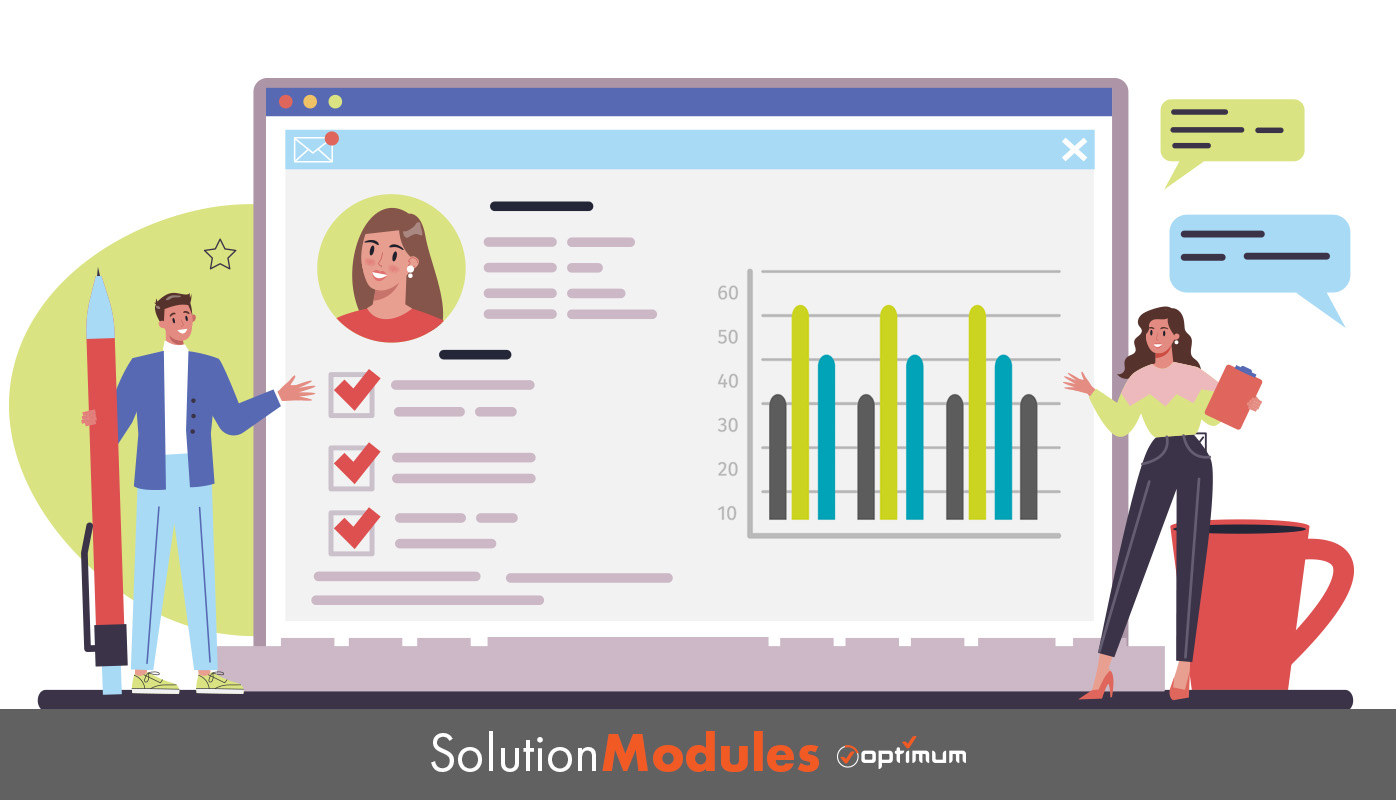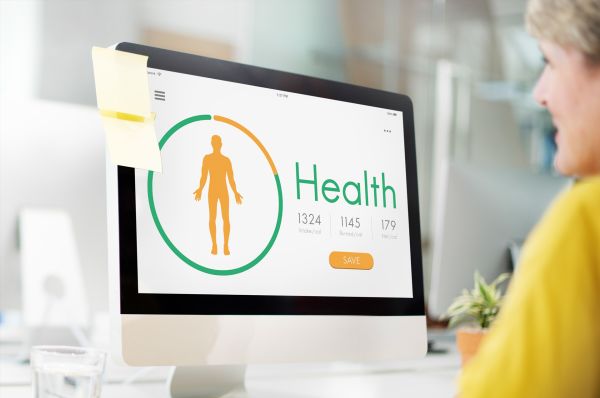
Employee Health Management
Handling staff wellness is a key factor for any enterprise. Through the use of Employee Health Management software, employers can easily monitor and manage employee health status to create a more productive working environment. By customizing employee health management applications, businesses can ensure that they are getting the most out of their investment while also providing employees with access to accurate information about their own well-being. In this blog post we will discuss the benefits of effective employee health management as well as explore how it impacts businesses in terms of efficiency and cost savings.
Table of Contents
- The Benefits of Employee Health Management
- Implementing Software Technology for Employee Health Management
- Customizing Employee Health Management Applications
- The Business Impact of Knowing the Health Status of Employees
- FAQs: Employee Health Management
- What is the purpose of employee health?
- What are some methods to improve workplace health?
- How do you keep your employees healthy?
- How do you deal with employee health issues?
- Conclusion
The Benefits of Employee Health Management
Employee health management is a critical component of any business. Adopting a health management program can lead to numerous gains, including heightened motivation among staff, fewer missed days at work and greater efficiency. By implementing a software-based system for managing employee health, businesses can take advantage of accurate data and more efficient processes. Employee health management software provides employers with rapid recognition of potential risks and assures that their personnel are obtaining necessary treatments so as not to let any health issues get worse with time.

Customizing employee health management applications allows companies to design solutions according to specific needs and preferences. For instance, some organizations may opt for automated reminders for scheduling doctor visits or tracking immunization records for compliance purposes. Others might consider incorporating features like biometric screenings or stress tests which can measure how well workers are managing job demands over time - invaluable data when it comes to making decisions about staffing levels or workload distribution among teams within an organization.
Organizations can utilize employee health management software to realize business advantages such as improved productivity and morale.
Key Takeaway
Employee health management is a key factor in any business' success, and software technology can provide an effective way to keep tabs on the wellbeing of workers. With custom-tailored applications that offer features like automated reminders for scheduling doctor visits or biometric screenings to measure job demands over time, companies are able to ensure their workforce stays healthy while increasing productivity and reducing absenteeism.
Implementing Software Technology for Employee Health Management
Software technology is a powerful tool for managing employee health. It enables HR professionals to keep track of their workforce’s overall health status in real-time, and customize reports based on specific criteria. By monitoring employee health closely, HR professionals can take proactive steps to address any potential issues before they become serious.
The first step in implementing employee health management software is selecting the right system for your organization’s needs. And while there are many options available, ranging from basic systems that provide basic reporting capabilities to more comprehensive solutions that offer detailed analytics about an individual's health status, it is important to know that your software is customizable to your unique business workflows.
Used appropriately, HR professionals can gain insights into employee health trends over time to identify potential issues and take action before they become serious problems. If data points suggest that particular staff members may be at risk of developing chronic illnesses, employers can take preemptive measures to improve their health and productivity over the long haul. By routinely examining company-appropriate metrics, HR teams can stay ahead of the curve and take preventive measures before any major issues arise, thereby saving time and money in the long run.
Overall, there are numerous benefits associated with implementing software technology for employee health management. These include; improved accuracy of employee health data and analysis, increased efficiency and cost savings, better understanding of overall population wellbeing, and greater visibility into risks and opportunities across all departments/teams within an organization. This ultimately helps companies create healthier workplaces while achieving bottom line business goals as well.

Customized reports based on specific criteria is another key benefit of using software technology for employee health management. An employer may be interested in examining personnel who have been unwell within the past four weeks or looking at any modifications to medical documents since a specified time. Having access to this type of tailored reporting makes it easier for HR departments to quickly pinpoint trends or patterns related to employee health and well-being.
Analytics are also important for managing employee health information. By looking at detailed analytics such as average number of sick days taken by each department or overall trends in absenteeism over time, employers can get a much clearer picture of how healthy their workforce is and take action accordingly if needed. By leveraging detailed analytics, employers can proactively develop workplace wellness initiatives and remain compliant with HIPAA regulations.
Overall, implementing software technology for managing employee health data offers numerous advantages that make life easier for HR professionals while simultaneously improving organizational performance through greater visibility into workforce wellness levels. Whether you’re trying to identify and address potential issues before they become major problems or require more accurate reporting capabilities – leveraging software tools designed specifically for tracking and managing employee health information can help you achieve your goals efficiently.
With customizable software, employers can further tailor their systems to meet the unique needs of each organization.
Key Takeaway
Using software technology to monitor the overall health status of your workforce is a smart move for any organization. It not only helps identify potential issues before they become serious problems but also allows HR teams to take preventive measures and save time and money in the long run.
Customizing Employee Health Management Applications
Customizing your employee health management application is an effective way to ensure that your business is realizing the maximum benefit.
One way customizable software can be used is through automated reminders for employees to update their health information. This ensures that all employees have up-to-date records on file so employers can better monitor any changes in an individual’s health status over time. Automated alerts can help reduce the paperwork involved in maintaining employee health records, allowing HR personnel to more easily keep track of updates from employees.
Another benefit of customizing employee health management software is the ability to generate detailed reports about the overall wellbeing of your team. Reports may include data such as number of days absent due to illness, or even trends in common illnesses among different departments within an organization. Having access to this data can be useful in pinpointing areas where improvements are necessary and devising plans for maintaining a healthy and productive work environment.

Customizable software also includes integration with existing HR systems so organizations can easily access the information they need without having to manually transfer data between multiple programs or platforms. This streamlined process allows businesses to get a bird's eye view on individual wellness journeys in real time - providing them with key insights into what's going on while saving precious resources and eliminating any hassle associated with scouring through disparate databases or spreadsheets.
Overall, investing in customizable employee health management software has many benefits that extend beyond just helping keep track of medical documents. By utilizing and customizing the correct software, HR professionals can configure their programs to fit their unique health polices and processes. Reminders sent out automatically guarantee that staff remain current with their health details, while configurable reports provide a better understanding of the general wellbeing of personnel. Additionally, integrating existing HR systems allows for easy data sharing between departments.
By utilizing this technology, businesses can identify and address potential problems before they become costly issues, thus saving them time and money. Managers can take preventative measures to reduce any potential risks by supplying further aid or resources if an employee's medical history points towards a pattern of repeated ailments or injuries. This may include taking steps such as revamping workspaces with ergonomic designs or providing healthier options at company events. By anticipating and responding to potential employee welness issues, businesses can be more cost-effective in the long run.
Key Takeaway
Customizing employee health management software to your unique business workflows can provide businesses with a wealth of information to better understand your workforce and improve the overall well-being of staff. This includes automated reminders, detailed reports and integration into existing HR systems - all aimed at providing organizations with an edge when it comes to keeping employees healthy while also saving time and resources.
The Business Impact of Knowing the Health Status of Employees
Having access to accurate data about employee health is an invaluable asset for any business. Accurate employee health data can be a powerful tool for companies, helping them make decisions that will boost performance and morale.
Employers can utilize the data to construct work environment regulations that are advantageous for both employees and employers. For example, if there’s a high rate of absenteeism due to illness, the employer may decide to implement flexible work hours or provide additional sick days as needed. This can help reduce the spread of germs while also making sure employees don’t feel like they have no choice but to come into work when they’re feeling under the weather.

Insight into employee health facilitates businesses in identifying areas requiring improvements so their personnel remain healthy and productive. For instance, if certain medical conditions among staff necessitate special provisions such as ergonomic furniture or air purifiers, these needs can be addressed accordingly allowing everyone to perform at work comfortably without compromising their wellbeing.
Finally, being aware of employee health issues also makes it easier for HR professionals to plan company-wide wellness initiatives such as providing flu shots or hosting stress management workshops during lunch breaks. These types of activities not only boost morale by showing your staff you care about them but also help keep costs down by preventing long-term illnesses from taking hold within your organization.
Overall, understanding the current state of employee health is essential in helping businesses create healthier working environments which ultimately leads to higher levels of productivity and satisfaction across all departments within an organization.
Key Takeaway
Monitoring the wellbeing of employees is an essential element for any business, as it helps to identify potential issues early on and foster more positive work atmospheres. Keeping an eye out for wellness issues among staff members helps businesses create initiatives that both boost morale and prevent long-term illnesses from taking hold within their organization, thus maximizing productivity while keeping costs down.
FAQs: Employee Health Management
xWhat is the purpose of employee health?
Employee wellness is a significant contributor to the prosperity of any organization. Knowing the health status of employees can help to identify potential risks and opportunities for improvement, as well as preventative measures that could be taken to ensure a healthy workforce. By understanding how workplace conditions may impact employee wellbeing and productivity, employers can make informed decisions about their working environment. Additionally, with up-to-date knowledge of employee health, compliance requirements set by regulatory bodies such as OSHA can be easily and confidently addressed.
xWhat are some methods to improve workplace health?
- Encourage personnel to stay in shape by offering them access to health knowledge and amenities, such as nutritional courses, physical activity plans, and psychological well-being aid.
- Implement wellness initiatives that promote physical activity in the workplace like standing desks or walking meetings.
- Offer incentives for employees who participate in health screenings or preventive care visits with their healthcare provider.
- Provide flexible working hours so employees can balance work-life demands without sacrificing personal time for restorative activities like yoga or meditation sessions during lunch breaks.
- Encourage personnel to pack their own lunches from home instead of purchasing fast food outside the office, and provide healthier selections in vending machines and cafeterias to promote sound dietary habits at work.
How do you keep employees healthy?
Having knowledge of employees' health can allow companies to take proactive steps in maintaining a healthy and productive workforce. This can include providing access to preventative care, encouraging regular physical activity, promoting good nutrition, offering mental health support services, and instituting wellness programs that reward healthy behaviors. By implementing such initiatives, employers can not only enhance employee wellbeing but also diminish absenteeism and raise morale - all of which contribute to enhanced performance and greater financial gains for the organization.
xHow do you deal with employee health issues?
Employee health issues should be addressed with a holistic approach. The holistic approach requires consideration of the whole person, including psychological, mental and physical health. HR professionals can provide resources to employees who are struggling with their health by offering flexible work schedules or providing access to medical services. Additionally, employers should ensure that workplace policies reflect an understanding of different types of disabilities and illnesses in order to create an inclusive environment for all employees. Knowing the health status of your staff is essential for creating a safe working environment and ensuring business continuity; it allows you to make informed decisions on how best to support them while maintaining productivity levels.
xConclusion
Realizing the wellness condition of personnel can have a beneficial effect on businesses, as it assists in preserving productivity, effectiveness, and morale, while keeping workers healthy. By utilizing the appropriate employee health management software technology, and by customizing the software, companies can collect and manage employee health information in a way that maps perfectly to their unique business workflows.